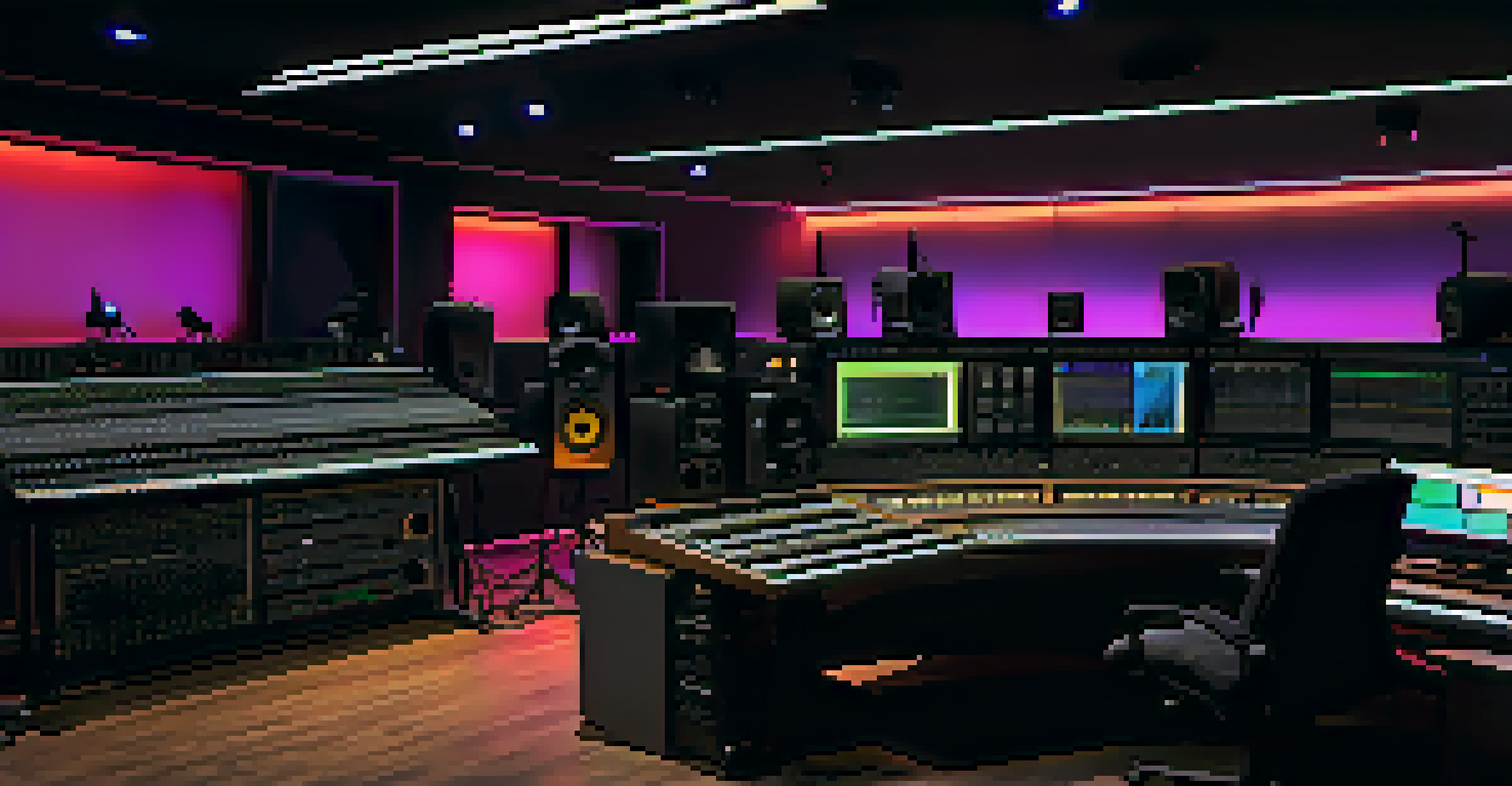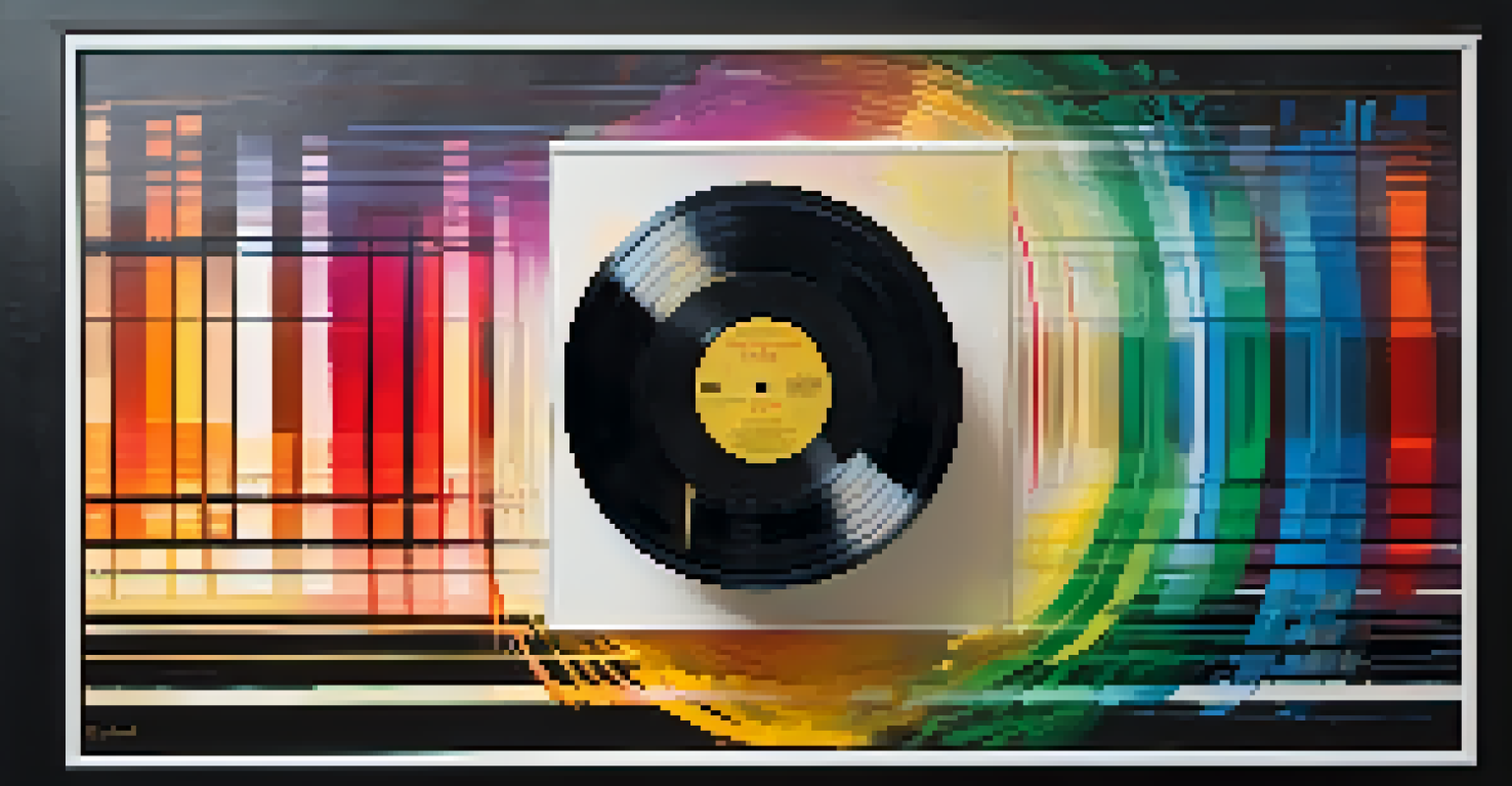Sound Technology in Film: The Journey from Silent to Sound

The Silent Era: The Birth of Film and Sound
In the early days of cinema, films were silent. Audiences relied on visual storytelling, with expressive actors and intertitles to convey emotion and narrative. Live music often accompanied screenings, filling the void and enhancing the atmosphere.
The magic of cinema is that it can create a world that is entirely different from our own—a world that can connect us to emotions and experiences we may never have encountered otherwise.
Silent films, like Charlie Chaplin's classics, relied heavily on physical comedy and exaggerated gestures to communicate. These performances were crucial, as they helped audiences connect with the story without spoken dialogue. The experience was a unique blend of sight and sound, albeit limited.
Despite their charm, filmmakers longed to add another layer to their storytelling. The absence of synchronized sound seemed like an obstacle, sparking a quest for innovation that would eventually change the film industry forever.
The Advent of Sound: A Game-Changer for Film
The late 1920s marked a monumental shift in filmmaking with the introduction of synchronized sound. The release of 'The Jazz Singer' in 1927 is often celebrated as the first successful 'talkie', captivating audiences with its combination of dialogue and music.

This breakthrough transformed the way stories were told on screen. Suddenly, actors could express their characters' emotions through voice, bringing depth and realism that silent films could only hint at. The soundscape became an essential element of storytelling.
Transition from Silence to Sound
The introduction of synchronized sound in the late 1920s revolutionized filmmaking, allowing for deeper emotional expression and storytelling.
However, the transition wasn't smooth. Filmmakers faced technical challenges and audience skepticism. Yet, the allure of sound soon won over the public, leading to a rapid embrace of this new technology and forever changing the cinematic landscape.
Technological Innovations: Advancing Sound Quality
As sound technology evolved, so did the quality of audio in films. The introduction of optical soundtracks in the 1930s allowed for clearer and more dynamic audio, enhancing the overall viewing experience. This innovation was crucial for capturing dialogue, music, and sound effects.
Music can change the world because it can change people.
Later advancements, like stereo sound in the 1950s, brought a new level of immersion. Filmmakers began to experiment with sound placement, creating a more engaging atmosphere that drew viewers into the story. Examples from films like 'West Side Story' showcase how music and sound design can elevate a narrative.
With each technological leap, the possibilities for creativity expanded. Sound designers became integral to the filmmaking process, collaborating closely with directors to build rich, detailed audio landscapes that complemented visual storytelling.
Sound Design: The Art of Creating Atmosphere
Sound design emerged as a critical component of filmmaking, blending creativity with technical skill. Sound designers meticulously craft audio elements, from dialogue to ambient sounds, to create a cohesive experience. Every footstep, whisper, and background noise serves a purpose.
The power of sound design is evident in films like 'A Quiet Place', where silence itself becomes a character. The careful manipulation of sound can enhance tension, evoke emotions, and even guide the audience's attention. It's a testament to the unseen artistry behind the scenes.
Advancements in Sound Technology
Technological innovations like optical soundtracks and digital audio workstations have significantly improved sound quality and the creative possibilities in film.
With advancements in technology, sound designers now have a vast toolkit at their disposal. Digital effects, Foley artistry, and surround sound systems allow for ever more intricate soundscapes, pushing the boundaries of what is possible in film.
The Role of Music: Setting the Emotional Tone
Music has always played a vital role in film, shaping the emotional landscape of a story. Composers like John Williams and Hans Zimmer have crafted unforgettable scores that resonate long after the credits roll. Their music not only accompanies the visuals but also deepens the viewer's emotional connection to the characters.
Think about iconic moments in cinema, where a simple melody can evoke joy, sadness, or suspense. The use of leitmotifs—musical themes associated with specific characters or ideas—helps to reinforce narrative elements, creating a richer storytelling experience.
The synergy between sound and music continues to evolve, with filmmakers exploring new ways to incorporate these elements. The careful selection and placement of music can elevate a scene, making it a powerful tool for storytelling.
The Impact of Digital Technology on Film Sound
The digital revolution has transformed every aspect of filmmaking, including sound. Digital audio workstations (DAWs) allow sound designers to edit and manipulate audio with unprecedented precision. This has made it easier to create complex soundscapes that enhance the film's narrative.
Moreover, advancements in streaming technology have changed how audiences experience sound. Surround sound systems and high-definition audio formats provide viewers with a more immersive experience at home, rivaling traditional cinema. As a result, filmmakers must consider how their sound design translates across various viewing platforms.
Future of Sound in Cinema
Emerging technologies such as artificial intelligence and spatial audio promise to further enhance immersive storytelling experiences in film.
With the rise of virtual reality (VR) and augmented reality (AR), the future of sound in film looks even more exciting. These technologies promise to create fully immersive environments where sound plays a crucial role in storytelling, inviting audiences to engage in new and innovative ways.
The Future of Sound Technology in Film
As we look ahead, the future of sound technology in film is brimming with potential. Innovations like artificial intelligence and machine learning are beginning to change how sound is created and integrated into films. These technologies promise to streamline the sound design process and create even more lifelike audio experiences.
Filmmakers are also exploring the use of spatial audio, which places sound in a 3D space, allowing for a more immersive experience. This technology can transport audiences into the heart of the action, making them feel like they are part of the story rather than just spectators.

Ultimately, the journey from silent films to today's sophisticated soundscapes illustrates the incredible evolution of sound technology in cinema. As filmmakers continue to push the boundaries of creativity, we can only imagine what the future holds for sound in film.